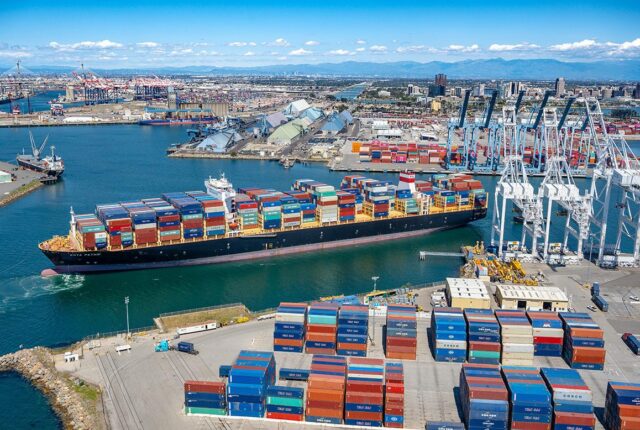
Mastering Supply Chain Optimization: Strategies for Cost Reduction and Efficiency
In today’s rapidly evolving business landscape, mastering supply chain optimization is no longer an option; it’s a necessity. With increasing customer demands, global market competition, and the ever-present need to reduce costs, efficient supply chain management has become a cornerstone of success for businesses. This comprehensive guide explores key strategies to help you navigate the complex world of supply chain optimization, ultimately improving your bottom line and customer satisfaction.
- Understanding Supply Chain Optimization
Supply chain optimization involves streamlining the flow of goods, information, and finances throughout the entire supply chain network. This process aims to minimize costs while maximizing efficiency and customer satisfaction.
- The Importance of Data Analytics
In today’s digital age, data is a goldmine. Leveraging advanced data analytics tools allows you to make informed decisions, forecast demand accurately, and optimize inventory levels, reducing unnecessary costs.
- Lean Inventory Management
Implementing lean inventory management principles helps in reducing excess inventory and carrying costs. By fine-tuning your inventory levels, you can respond more efficiently to changes in demand.
- Efficient Transportation Strategies
Optimizing transportation is a critical component of supply chain efficiency. Utilize route planning, load optimization, and real-time tracking to reduce transit times and costs.
- Vendor Collaboration
Building strong relationships with your suppliers can lead to mutually beneficial collaborations. Collaborative efforts can reduce lead times, improve product quality, and cut down costs.
- Warehouse Optimization
Efficient warehouse operations are vital for supply chain success. Implement automation, barcode systems, and layout optimization to improve picking and packing processes.
- Sustainability in Supply Chains
Sustainability isn’t just a buzzword; it’s a growing customer demand. Incorporate eco-friendly practices like green logistics and sustainable sourcing to reduce costs and appeal to environmentally conscious consumers.
- Risk Management
Mitigating supply chain risks is crucial. Develop risk management strategies to address potential disruptions such as natural disasters, geopolitical events, or supplier issues.
- Technology Integration
Harness the power of technology through supply chain management software and tools. These solutions enhance visibility, facilitate communication, and improve decision-making.
- Demand Forecasting
Accurate demand forecasting is the backbone of efficient supply chain management. By understanding customer demand patterns, you can optimize production and reduce carrying costs.
- Cost-to-Serve Analysis
Analyzing the cost-to-serve per customer segment allows you to identify unprofitable segments and tailor your supply chain strategies accordingly.
- Demand-Supply Matching
Align your supply chain with actual demand rather than overproducing or underproducing. This approach minimizes waste and maximizes profitability.
- Postponement Strategies
Implement postponement strategies to delay product differentiation until closer to the point of consumption, reducing the need for excessive inventory.
- Just-In-Time Inventory
Adopting the just-in-time (JIT) inventory system minimizes holding costs and ensures you have the right amount of inventory on hand to meet customer demand.
- International Supply Chain Considerations
For businesses operating globally, understanding international trade regulations and optimizing cross-border logistics is essential for cost reduction.
- Inventory Turnover
Increasing inventory turnover rates can free up capital and reduce carrying costs, ultimately boosting your bottom line.
17. Employee Training and Development
Investing in your workforce’s skills and knowledge can lead to improved supply chain efficiency and innovative problem-solving.
18. Continuous Improvement
Embrace a culture of continuous improvement, regularly reassessing and refining your supply chain processes.
FAQs
Q: What are the primary benefits of supply chain optimization?
A: Supply chain optimization can lead to cost reduction, improved efficiency, better customer satisfaction, and increased competitiveness.
Q: How can technology aid in supply chain optimization?
A: Technology can provide real-time visibility, data analysis, and automation, which are essential for making informed decisions and streamlining operations.
Q: What is the role of risk management in supply chain optimization?
A: Risk management helps businesses prepare for and mitigate disruptions, ensuring a smoother supply chain operation and cost savings.
Q: How can I get started with supply chain optimization?
A: Begin by conducting a thorough assessment of your current supply chain processes and identifying areas for improvement. Engage with experts and invest in necessary technology and training.
Conclusion
Mastering supply chain optimization is an ongoing journey that demands dedication, innovation, and adaptability. By implementing the strategies outlined in this guide and continuously fine-tuning your processes, you can reduce costs, enhance efficiency, and stay ahead of the competition in today’s dynamic business environment.






